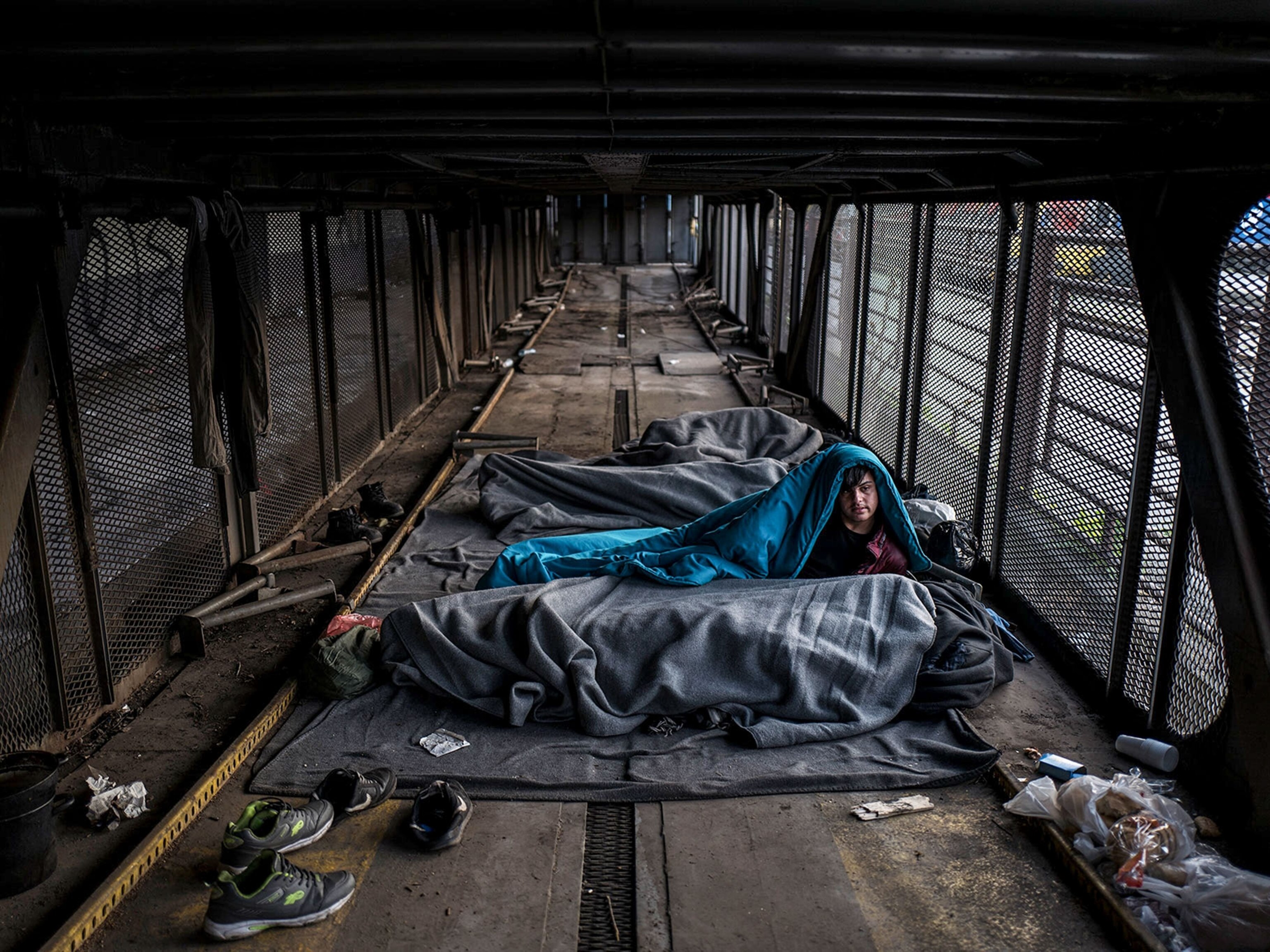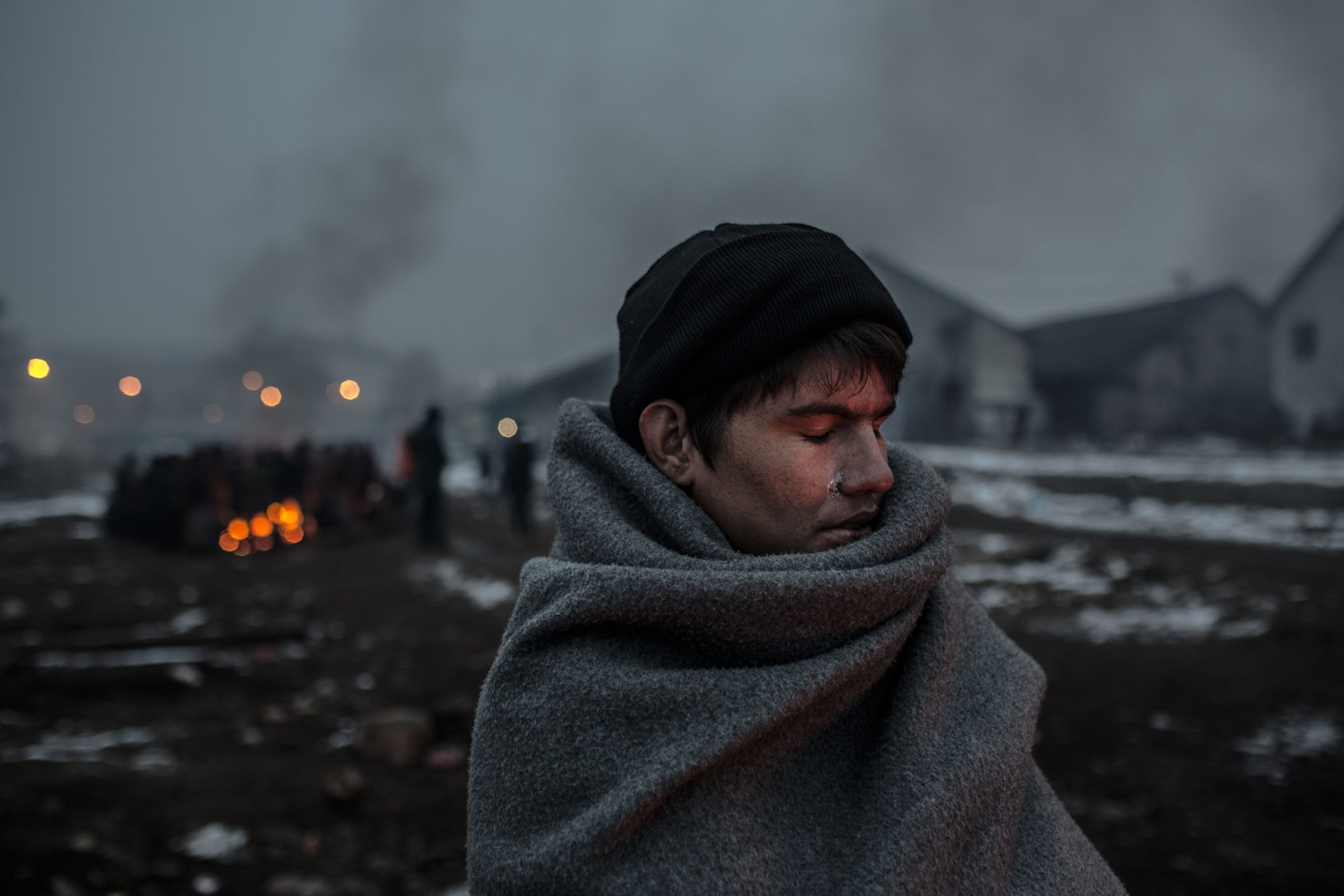
Gritty Pictures Show Refugee Life in Abandoned Warehouses
"They are in the worst living conditions you can possibly imagine," says photographer Daniel Etter of a group of refugees living in Serbia's capital.
Behind the central train station in Belgrade, Serbia, a few hundred refugees and migrants, mostly men and boys from Afghanistan, are camped out in abandoned warehouses, cars, and train carriages. In an attempt to keep warm in frigid winter temperatures, they burn railway ties that had once been fortified with tar oil, creating a thick, carcinogenic smoke.
"They are in the worst living conditions you can possibly imagine," says photographer Daniel Etter, who was there at the end of January on assignment for the UNHCR. He describes one of the buildings as "a dark warehouse, filled with smoke, people completely covered in blankets, constant coughing coming from every corner." In spite of it all, he says, the element of human dignity remains. "People are very open. The vast majority welcome you, invite you to have tea."
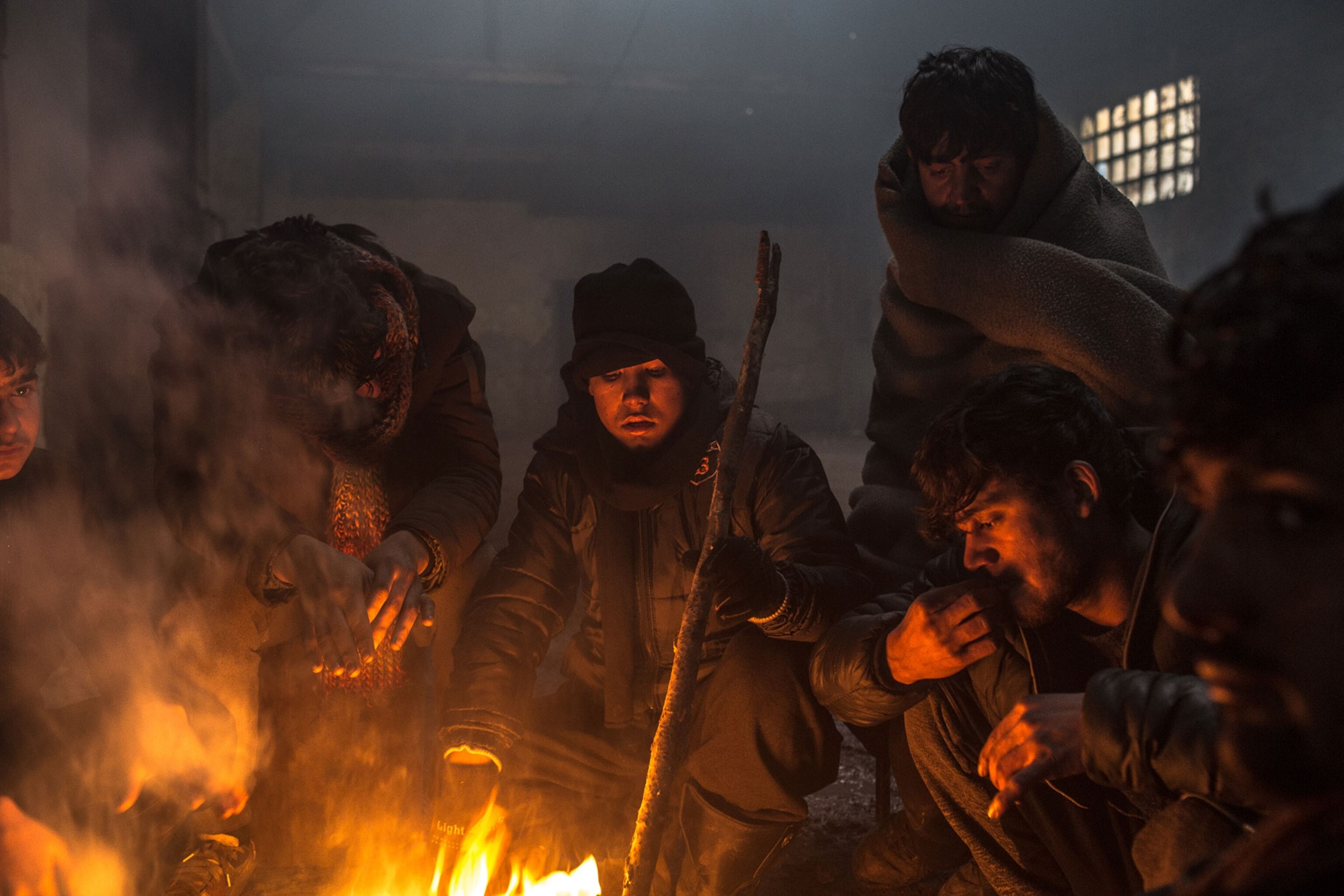
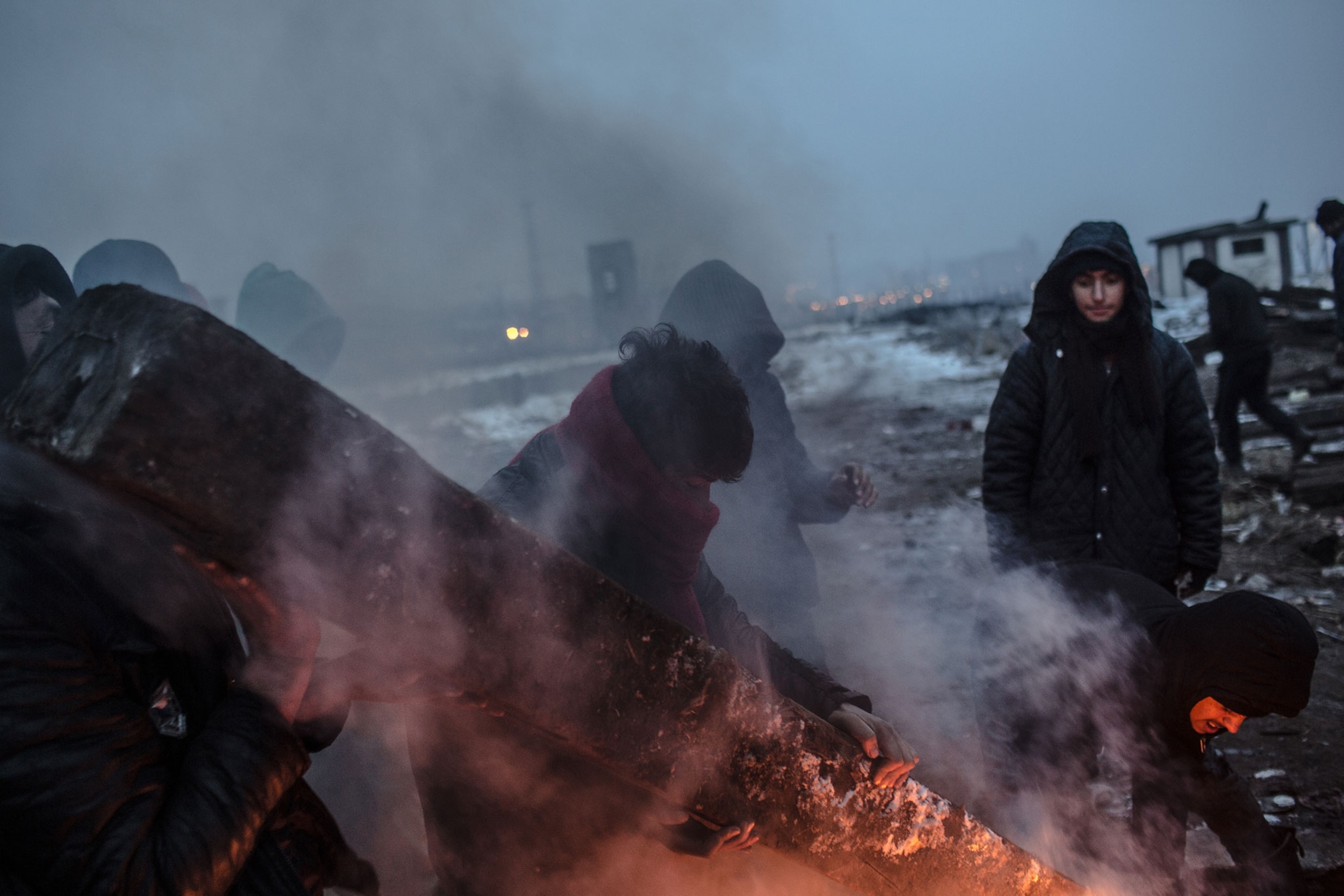
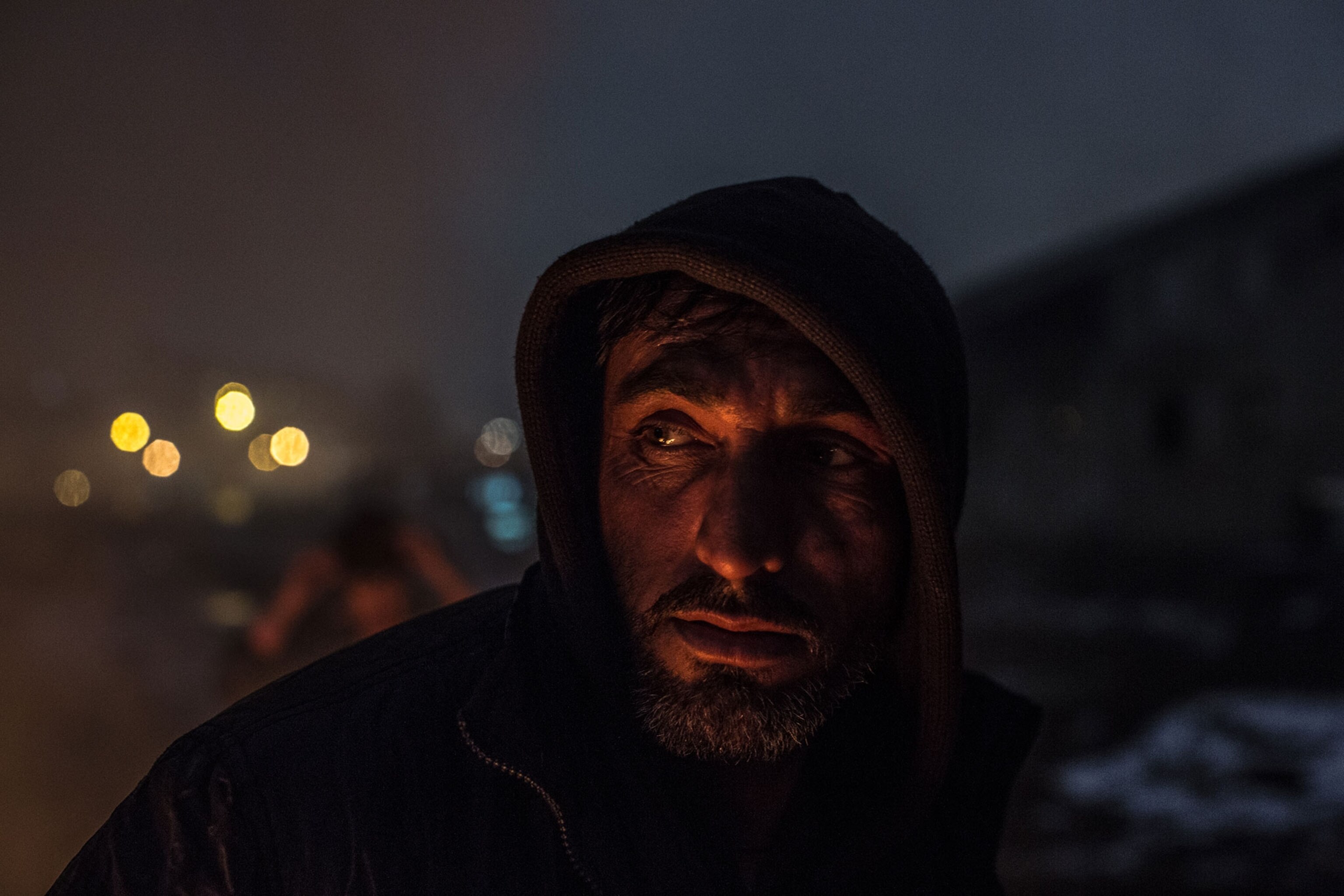
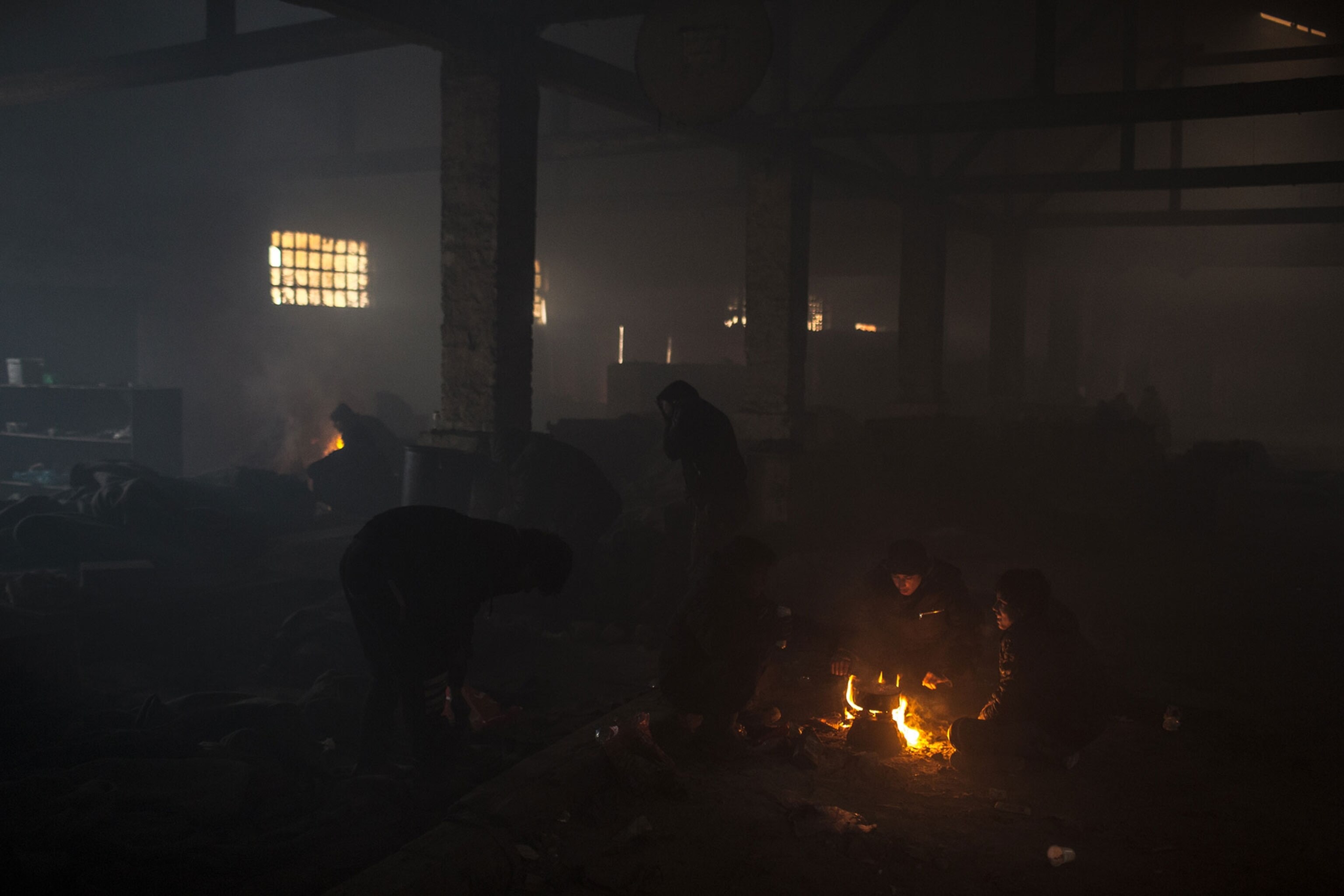
Many of them have been here for months, trying repeatedly to cross the tightly controlled border into Croatia or Hungary but being sent back, sometimes after having been badly beaten by border guards. At the time of Etter's visit, the number of people living in this makeshift camp was estimated to be 1,000. In recent days, several hundred of them have agreed to move into a newly opened government-run shelter. Still, for reasons including a fear of not being able to continue the journey on to Europe, some choose to remain outside official parameters, often seeking the help of smugglers.
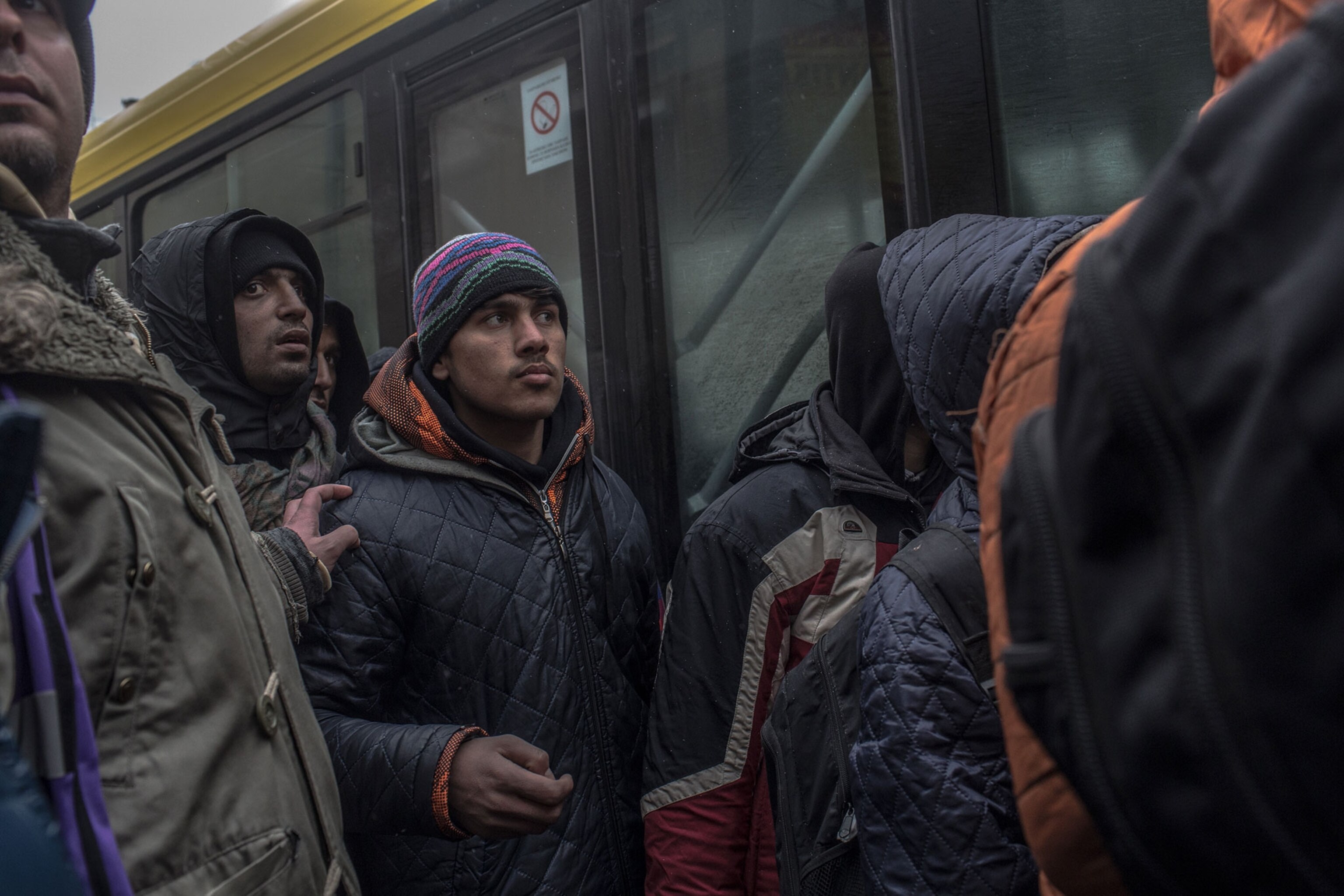
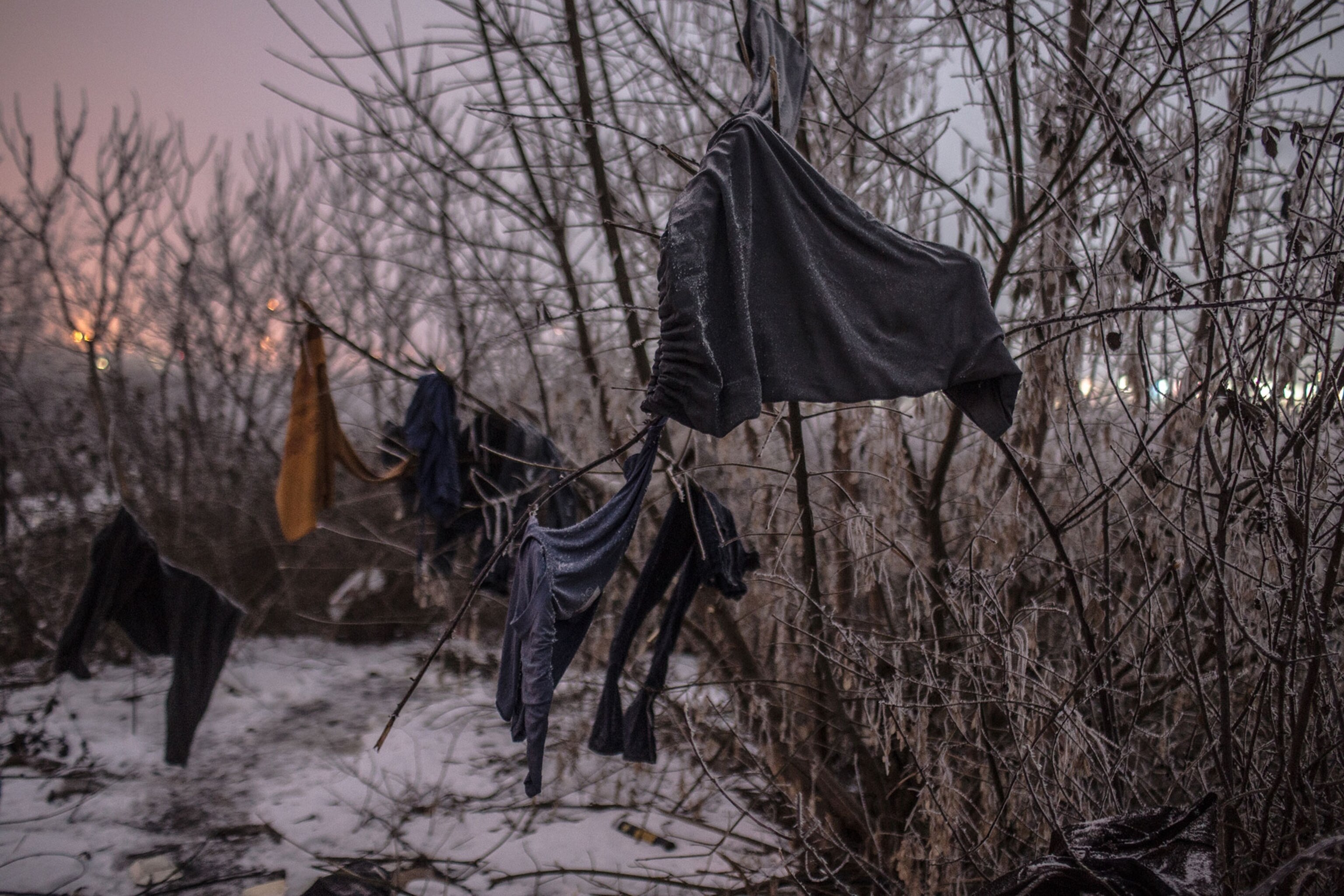
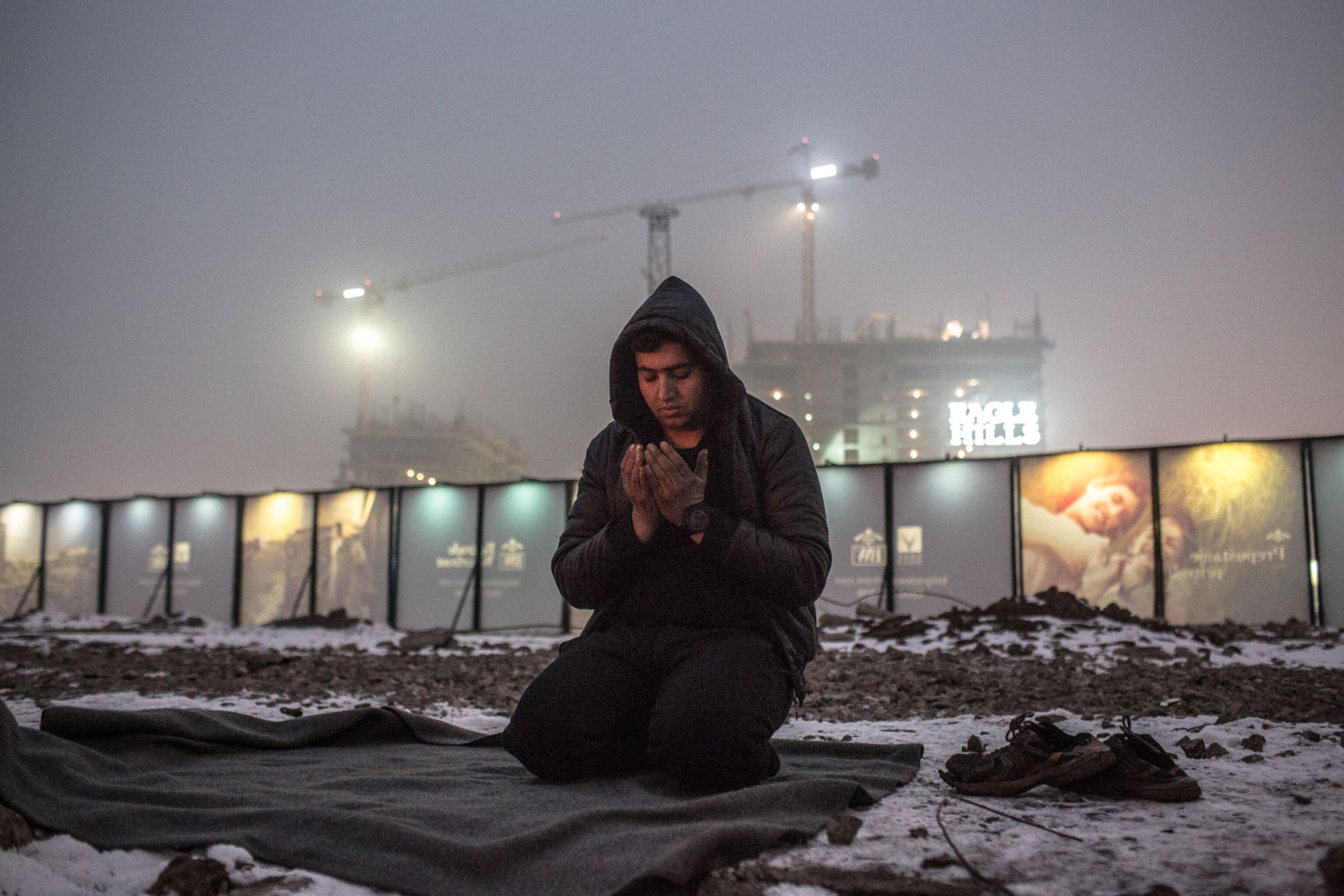
According to UN estimates, there are about 8,000 refugees and migrants—almost half of them children—currently stranded in Serbia since the borders into Croatia and Hungary were closed in March 2016. While families, women, and children are typically housed in the reception centers, Etter came across quite a few unaccompanied male minors living in the warehouse. Etter, who has been covering the human exodus from the Middle East and Afghanistan since 2012, says this is something he has seen before with refugees from Afghanistan in particular.
"They all have similar stories," he says, "issues with the Taliban and Daesh, feuds with neighbors, or general insecurity. They are often sent by families, in other cases parents die." Etter found that when the father dies, the eldest male in the family no longer has protection and is specifically targeted by the Taliban.
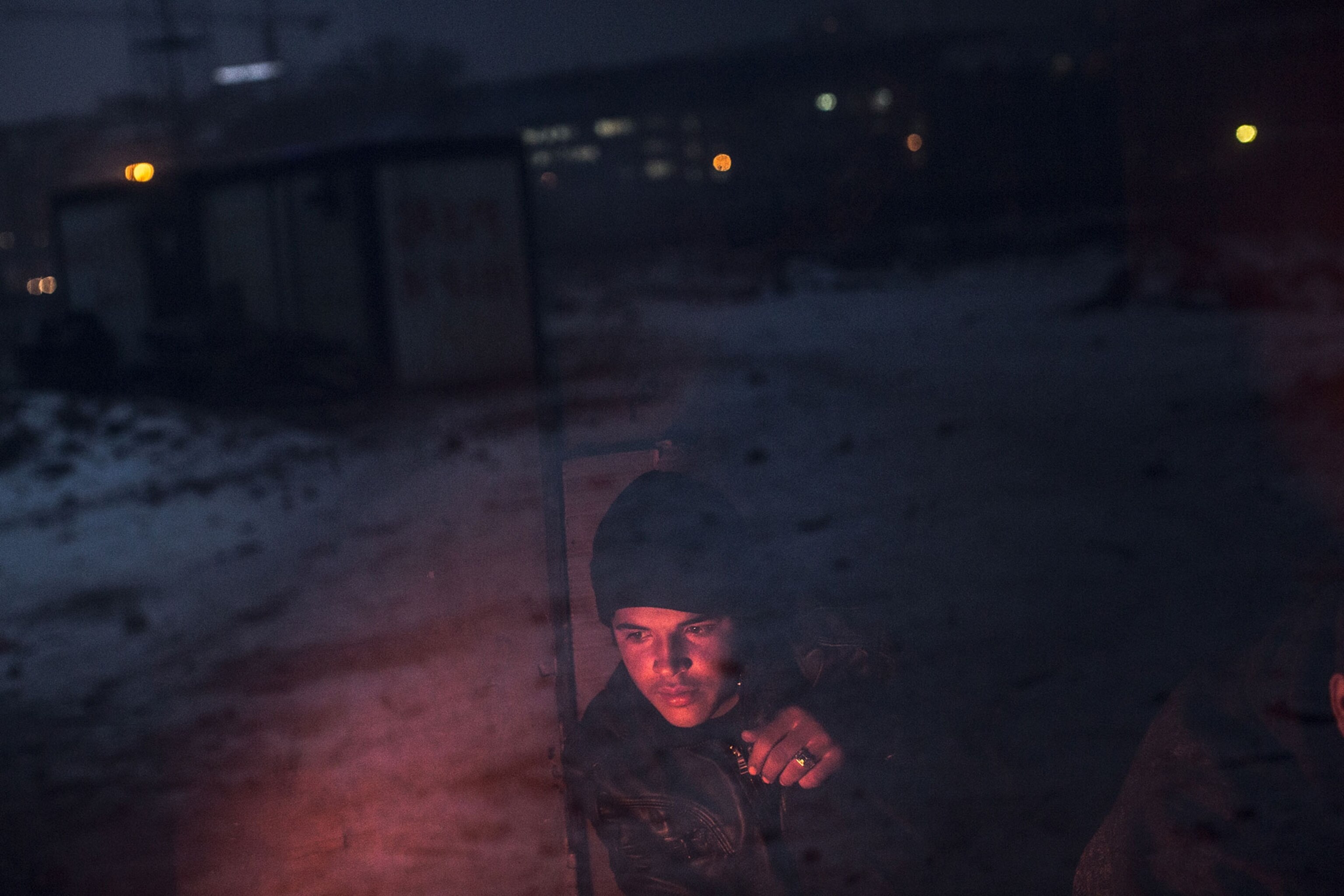
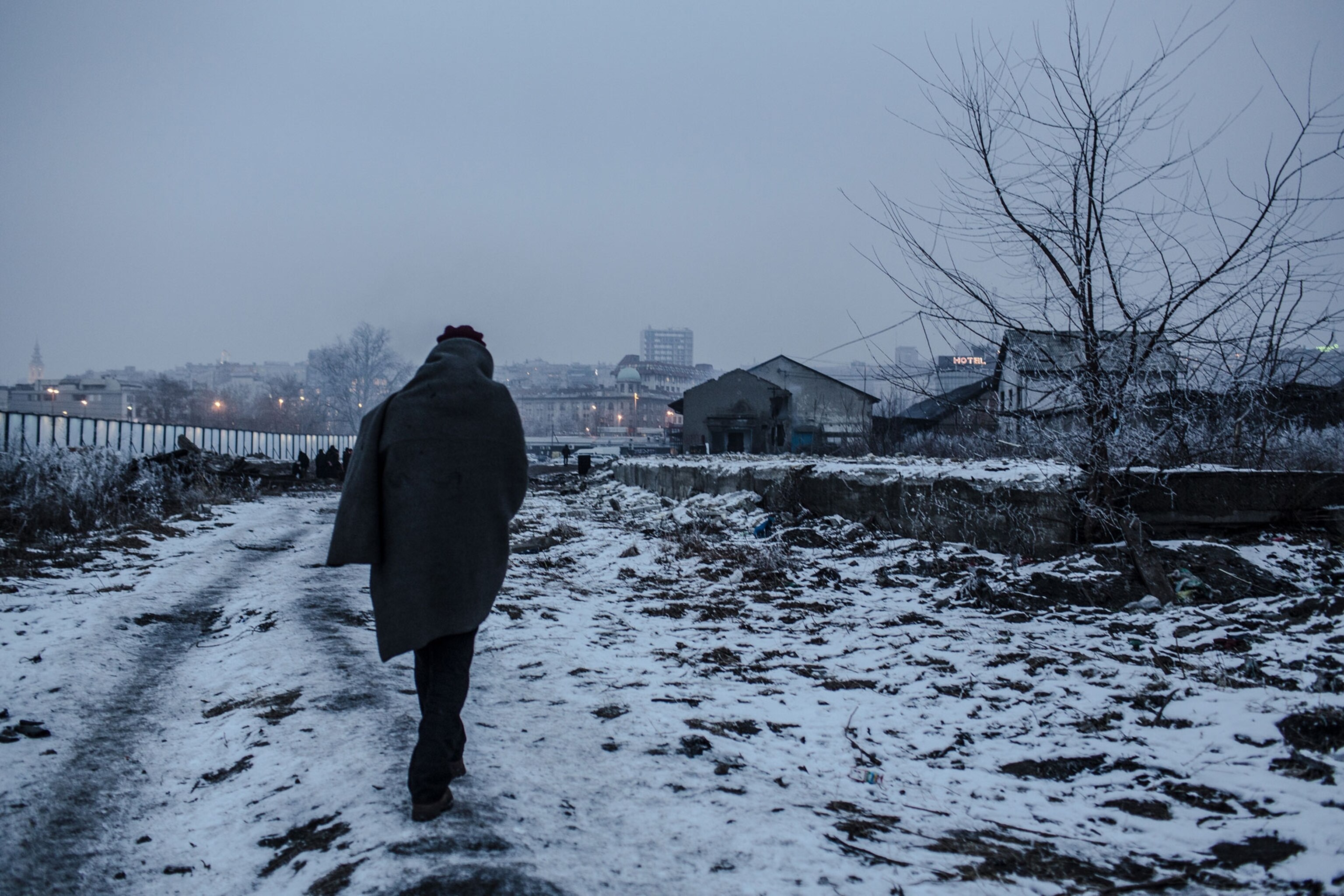
When asked what was most the most striking thing about this current iteration of the refugee crisis, Etter says, "There is no will to find a political solution to this problem. In 2015 people had to risk their lives to get into Germany. The whole thing could have been prevented if there had been a large contingent of people able to come legally. More and more people take these risks. There is still no solution."
You can see more of Daniel Etter's work on his website.





